The artistry of Sally Hootnick
The artistry of Sally Hootnick
The Manlius-based painter aims to channel hope and optimism through her artwork.
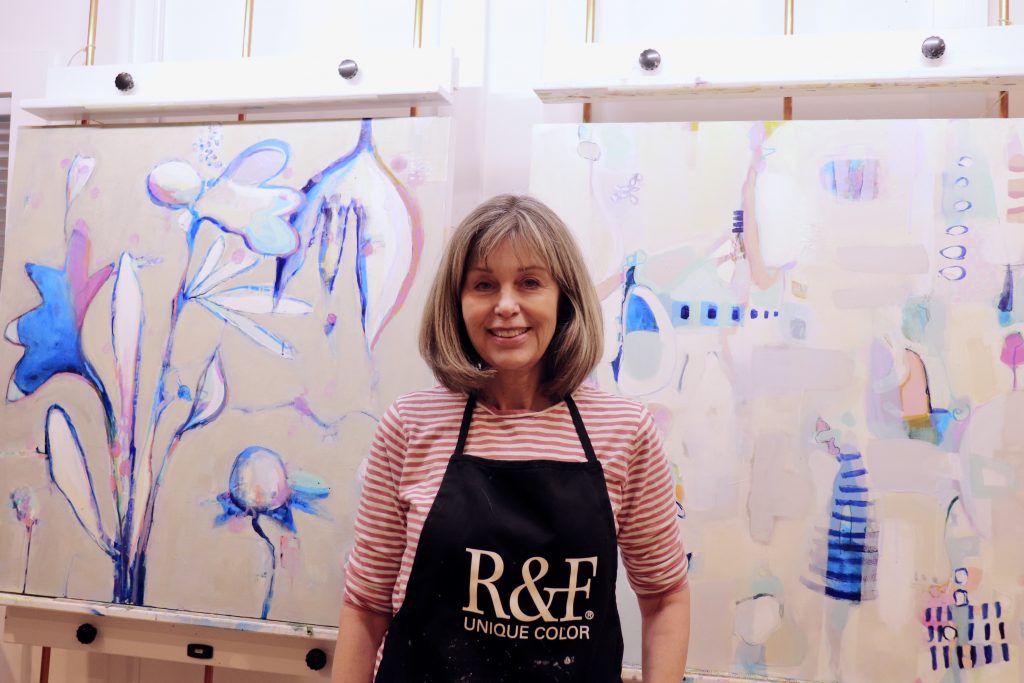
In the corner of a makeshift art studio in her basement, Sally Hootnick dips a paintbrush into a pool of green, waxy paint on a heated plate. Sketches, paintings and color palettes adorn the walls. Mason jars and repurposed Talenti gelato containers filled with beeswax-based paint pellets line the windowsill.
Hootnick blotches the paint onto a wooden board, adding to previous layers of dried wax and pigment. She ignites her handheld blowtorch, fusing the hot wax and pigment together with a swirling motion. “I do this every time I lay down paint. It bonds it to the surface below. If you don’t, the paint will chip.”
The process also gives encaustic painting its name, originating from the Greek word enkaiein, or “burned in.” Encaustics involve a blend of natural beeswax, damar tree resin and color pigments that are combined and sealed with heat.
Hootnick was first drawn to encaustics 15 years ago when she found inspiration when visiting an art show at the Chautauqua Institute. Soon after, she began to attend encaustic workshops hosted by R&F Homemade Paints. Hootnick says she was attracted to encaustics because of the opportunity to blend multiple mediums into one.
“When I discovered encaustics, I just had to try it,” she said. “It’s one of those art forms that I can incorporate so many things into — drawing, painting, collage — you name it.”
When she first started working with the medium, she used hot plates from her kitchen to warm the paints. Now she primarily relies on temperature-controlled glass plates and a blowtorch from Home Depot.
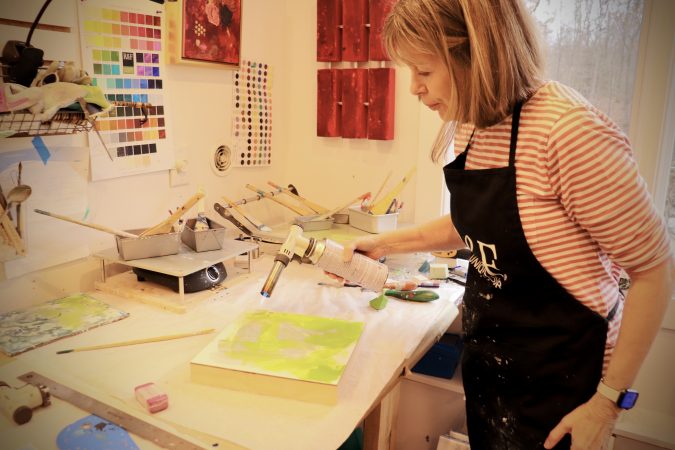
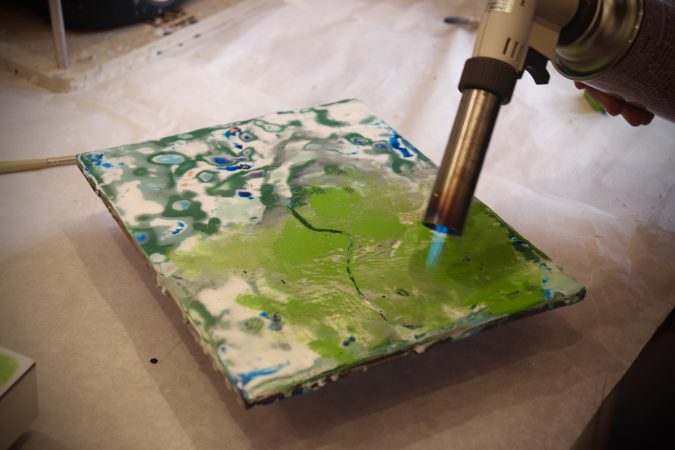
“The plate has a heating element to warm the paints. It’s specifically designed for encaustics,” she explained. “But you don’t have to have one — I still have a stack of pancake griddles.”
Hootnick is a multi-dimensional artist whose artwork ranges from landscape scenes to abstract pieces. She works with encaustic, oil and watercolor paints, along with mixed media and collage art. She uses ceramic art tools and miscellaneous utensils to carve texture and create designs in her encaustic paintings.
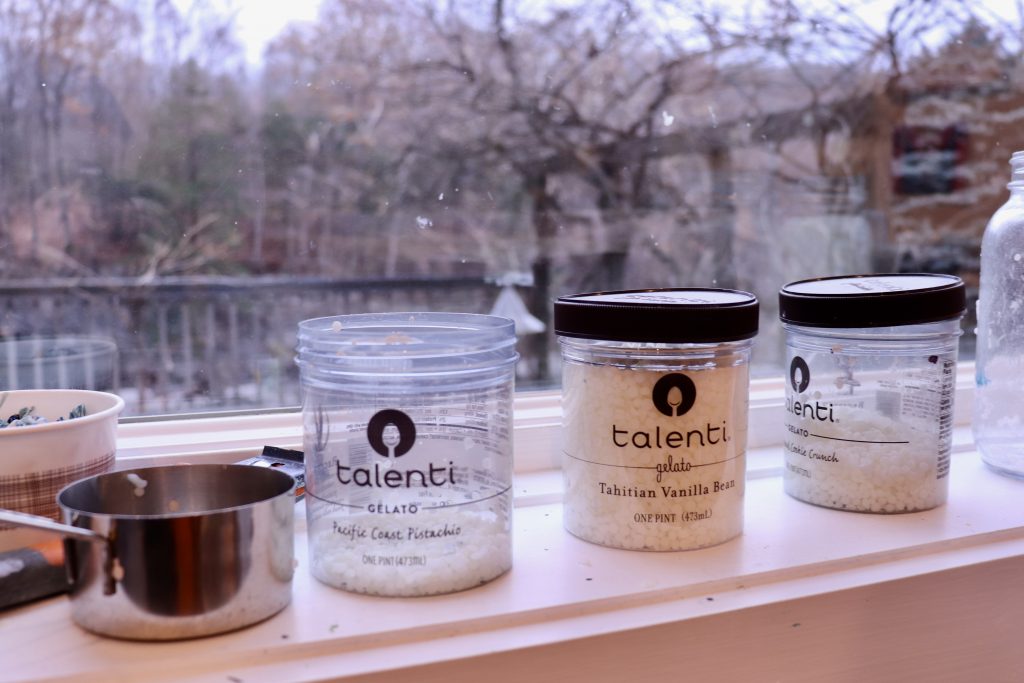
Most recently, the Gandee Gallery in Fabius displayed her artwork. Now, the full-time painter is building a collective art studio near her home in Manlius where she resides with her husband and pet dogs. The expanded studio will provide Hootnick with more space to create, host workshops and showcase the work of other local artists. Hootnick anticipates the studio will open in the spring.
Encouraged by her grandmother, an artist, Hootnick began overseeing art workshops while studying for her undergraduate degree at the State University of New York at Geneseo. She recalls teaching art workshops on batik, a painting technique that involves wax and layering.
Throughout her young adulthood, Hootnick pursued jobs that kept her close to her home and her children but was always drawn back to the arts. “I was trying to do things that didn’t take me away from the house too much,” she said. “Eventually I decided I needed to stop doing everything else and just pursue art. Now I paint every day.”
In the 1990s, Hootnick enrolled in a painting class taught by Mary Padgett at Syracuse University. Pagett worked as an adjunct art professor who “built a curriculum on color” in the art department before she retired in 2014.
“She had a young family then, but she still made time to immerse herself in artistic thinking,” Padgett said. “Since then, we’ve remained as artists who value each other’s work. More importantly, we’ve developed a close friendship.”
Hootnick and her former instructor have remained close over the years, and still frequently collaborate. Padgett says what she likes most about Hootnick’s artwork is her commitment to the craft. The duo frequently travel for artistic inspiration, including multiple trips with Padgett’s Immersive Workshops: Home and Abroad program.
In her early art career, Hootnick practiced realism. Over time she experimented with abstraction, adding conceptual elements to her paintings and stills. “When I started to learn to draw and paint, I wanted things to look as realistic as possible, but that got boring to me.” She described her artistic style as “a mix of realism, abstraction and the in-between.”
Hootnick says painting with encaustics requires navigating a “learning curve.” It’s a tedious process that requires careful monitoring of the wax temperature and months of work layering paint, and sometimes, scraping it off. “For every one good painting you have, there can be ten bad ones,” she said.
Hootnick creates art that she would proudly display on her own walls. Her most fulfilling moments come when others appreciate and enjoy her artwork — especially the pieces she deemed less impressive.
“I’ll look at one of my pieces and think it didn’t work out. And then someone will come into my studio and fall in love with it,” she explained. “That’s just how art works.”
As a painter, Hootnick is inspired by the diversity and beauty of nature. Many of her paintings, both abstract and landscape, feature natural elements.
“When I’m doing an abstract, I don’t start with an idea. I just start with a lot of paint,” she said. “After a while, shapes emerge. I tend to paint plant forms and flowers. Even in my abstract pieces, you can pick out natural elements.”
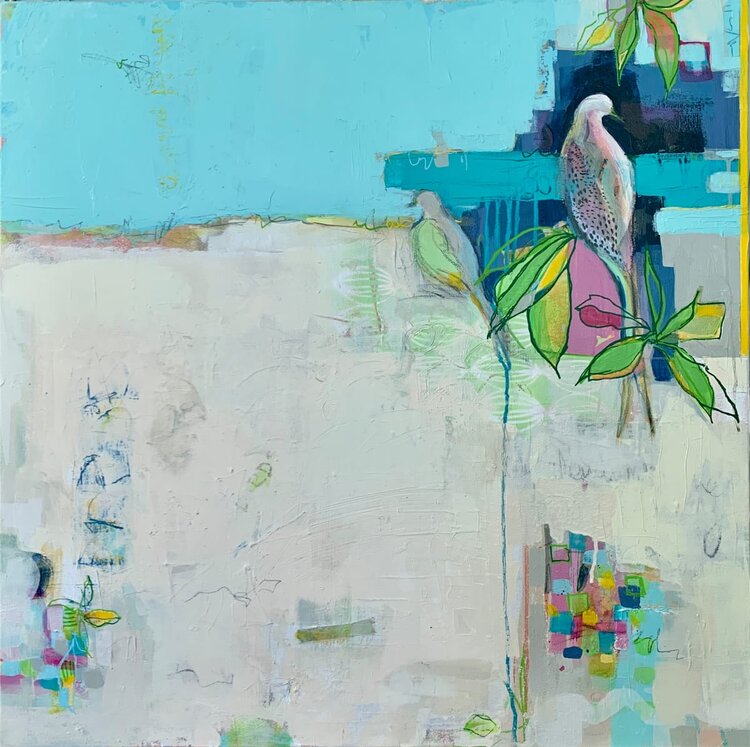
Joy is a recurring theme in Hootnick’s artwork, where painting serves as a therapeutic, creative outlet. The expressive medium is a reflection of her desire to evoke hope and optimism for viewers.
“There’s a big push to create art with some larger meaning, but that’s just not how I paint. In my art, I paint things that make me happy,” she said. “I want my art to be uplifting and I hope that comes across to other people.”
Occasionally, Hootnick explores more somber themes in her artwork. “I don’t generally paint anything dark. Although I have, at times, when things are getting me down,” she said.
March 2020 marked a notable period of Hootnick’s art career, with two overlapping solo art exhibitions. After months of preparation, the first gallery had a successful opening. The second never opened and the first was cut short. Throughout the COVID-19 pandemic, Hootnick spent most of her time in the studio space she built in her home.
“Creating artwork is usually a solitary process, so it wasn’t much different,” she said on the pandemic.
She calls the artwork she created during this period the “Pandemic Series.” Many of the paintings feature incorporated text, where she expressed her thoughts before covering them with colored wax and resin.
“You can’t see too much of the text now. I don’t even remember what I wrote,” she laughed as she flipped through stacked canvases. “If bad things are happening in the world, I scribble it all over the canvas. It’s a real release for me.”
“Creating art is something I’ve just always had to do. If I don’t, I feel awful,” she said. “I don’t know how people go without a creative outlet.”
Sally Hootnick’s artwork can be viewed at www.sallyhootnick.com and in the Gandee Gallery located at 7846 Main St in Fabius.

